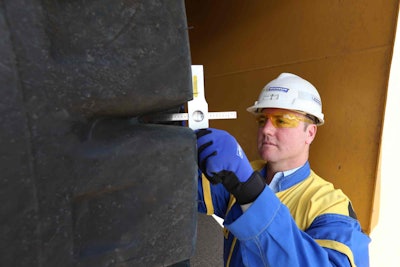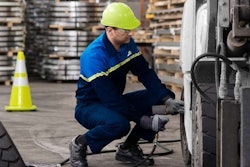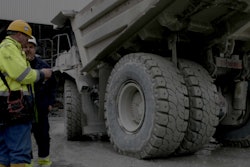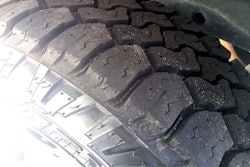 You can save some money retreading big tires, but a thorough maintenance and monitoring program, including regular tread depth measurement, is needed to make sure your tires stay healthy enough to recap.
You can save some money retreading big tires, but a thorough maintenance and monitoring program, including regular tread depth measurement, is needed to make sure your tires stay healthy enough to recap.Ten years ago, a global tire shortage had contractors scrambling to get tires on their machines and the retreading industry took off. Since then, the recession reduced demand and a number of new tire factories increased supply. The end result was plenty of new tires at historically low costs.
“Unfortunately, the recapping industry has taken a hit because tires are coming in cheaper than they can cap, especially the small sizes,” says Gary Pompo, manager field technical services at BKT. But as you go up in size, recapping or retreading can sometimes still make good economic sense, he says.
One of the main challenges to retreading in the construction industry is that by some estimates 75-percent of earthmover tires are run to destruction rather than gradually worn out. “It is important to get the full use out of the casing, since 80 percent of the cost of a tire is in the casing,” says Jamey Fish, director of marketing, Michelin Earthmover NA. “It’s recommended to include guidelines for recapping in the maintenance program, which includes the pull point to ensure the casing remains in the optimal condition for this process,” he says.
That also means you have to take care of your tires. Maintain correct air pressures, don’t overload your machines and keep worksites free from debris like rocks, roots and rebar. Additionally, maintain the alignment of your tires on the axles and rotate tires if necessary to even out wear.
Depending on the workmanship and the quality of the casing a tire can be retreaded a few times with good results. But tires lose some casing strength with each new retreading. “Please talk to your tire man to get an idea when you should pull them,” Pompo says. “Sometimes the tire man will advise that it’s not worth retreading.”










